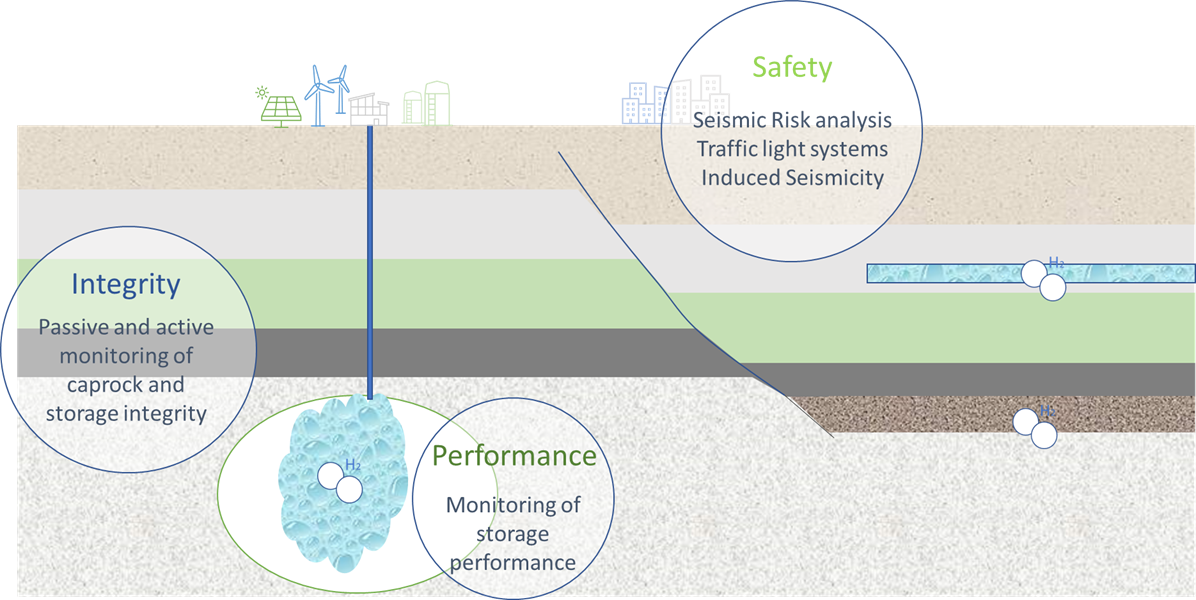 Underground hydrogen storageUnderground Hydrogen Storage (UHS)
Underground hydrogen storageUnderground Hydrogen Storage (UHS)
Hydrogen has been identified as a key source for energy in the transition from fossil fuels to alternative and renewable energy sources. The efficient use of this source as a support for intermittent renewable sources such as wind or solar power and for its use in transport and domestic and industrial heating requires the availability of high-capacity low-maintenance storage. As in the case of natural gas or CO2, the ideal candidate for this solution is the use of deep underground geological reservoirs, with the use of salt caverns, deep saline aquifers and depleted hydrocarbon reservoirs identified as ideal candidates with capacity for the extensive use of Hydrogen as a sustainable source of energy.
Seismic monitoring techniques are uniquely positioned to provide assurance of the safety and efficiency of these operations. ASC can assist stakeholders in all stages of planning and implementing a safe and effective geological storage
As part of our R&D program, ASC has joined as a member of Task 42 of the Hydrogen TCP, a programme established in 1977 to promote and facilitate collaborative hydrogen research and development and information exchange among its member countries. Task 42 of the Hydrogen TCP aims to support the acceleration of the safe implementation of UHS. Specifically ASC will be involved in resarching the application of seismic monitoring techniques for the assurance of the integrity of the storage and its effective performance.
Find out more about the Hydrogen TCP at: https://www.ieahydrogen.org/task/task-42-underground-hydrogen-storage/
 Seismic monitoring of underground hydrogen storage
Seismic monitoring of underground hydrogen storage
Our services for the clean energy industry include:
- Seismic risk analysis and characterisation of existing active fractures within sites with potential for storage
- Design and optimisation of seismic monitoring arrays.
- Real-time processing of microseismic data (passive monitoring) and time-lapse imaging of transmission velocities (active monitoring) to provide feed-back to engineers on potential damage to reservoir bounds and cap rock integrity that may affect its confining properties .
- Post-analysis of reservoir containment effectiveness.
- Delineation of potential breakthrough and communication with active fault structures.
- Fracture mapping to provide information on feasibility of target volumes for new developments.
- Correlation with predictive numerical models for feedback on future site development
- In-depth understanding of fracture mechanisms through the integration of acquired data and “Synthetic Rock Mass” models built with Itasca’s Particle Fluid Code (PFC) and site-scale degradation models.
- Acquisition system-independent seismic processing software for automatic, real-time processing of induced seismicity.
- Fully-featured microseismic training courses focussed on the principles behind the technology, processing algorithms and hands-on experience of using processing software


